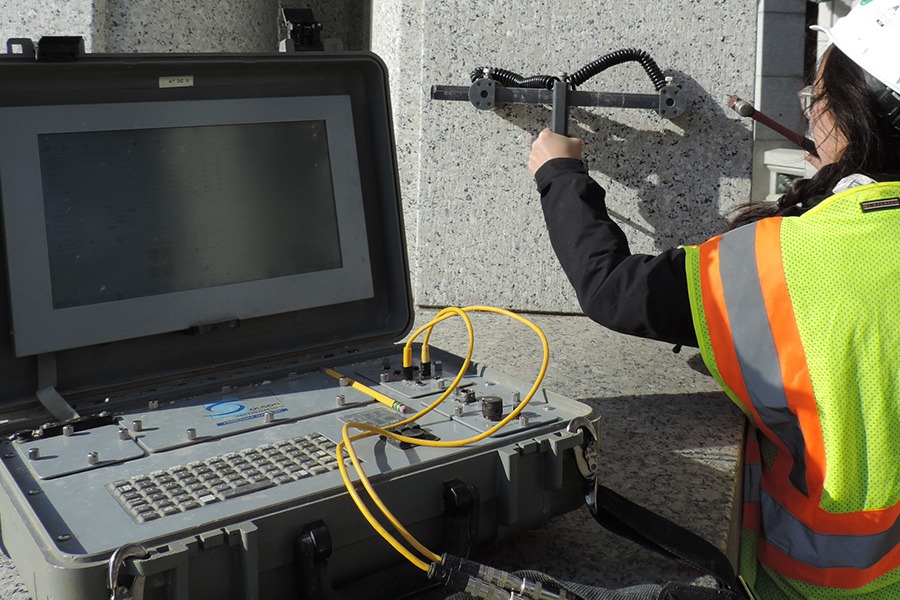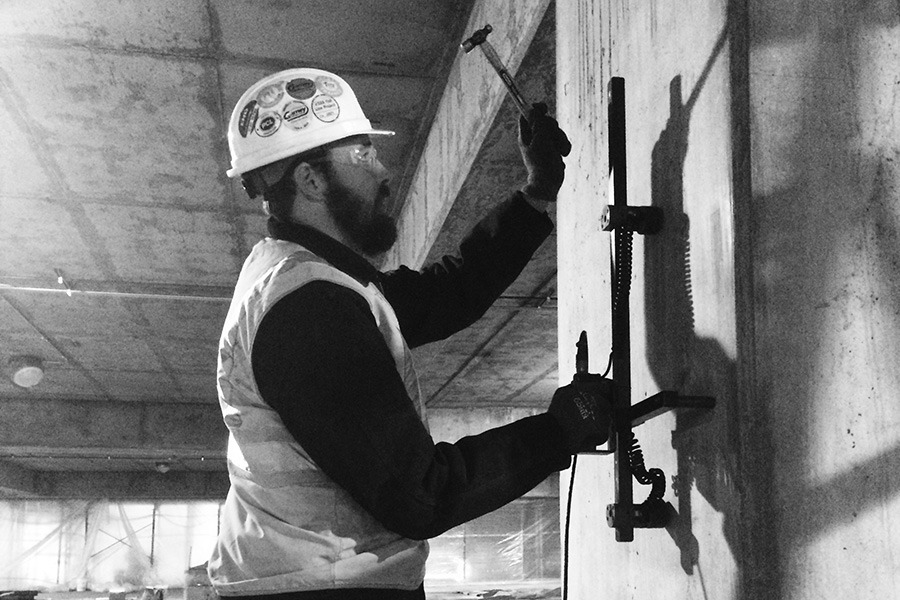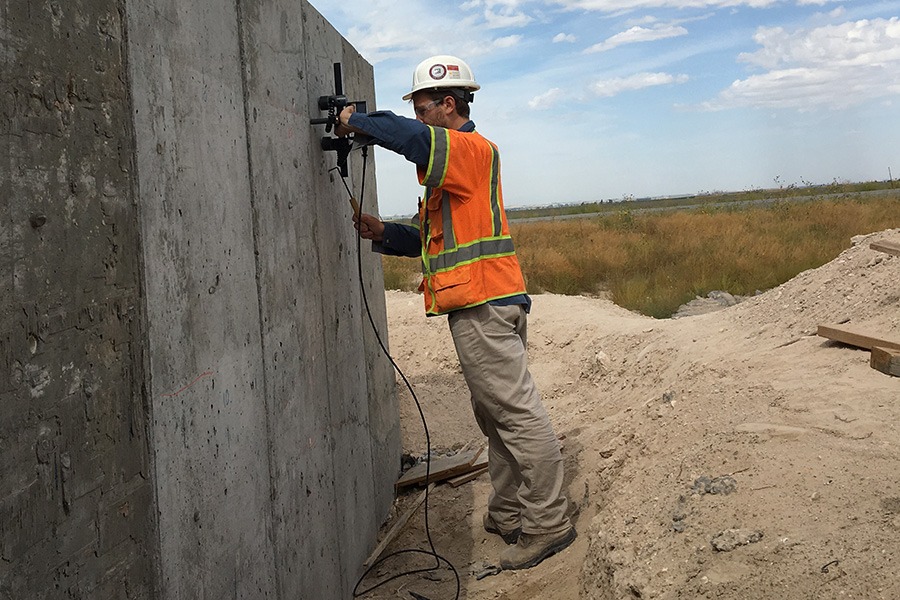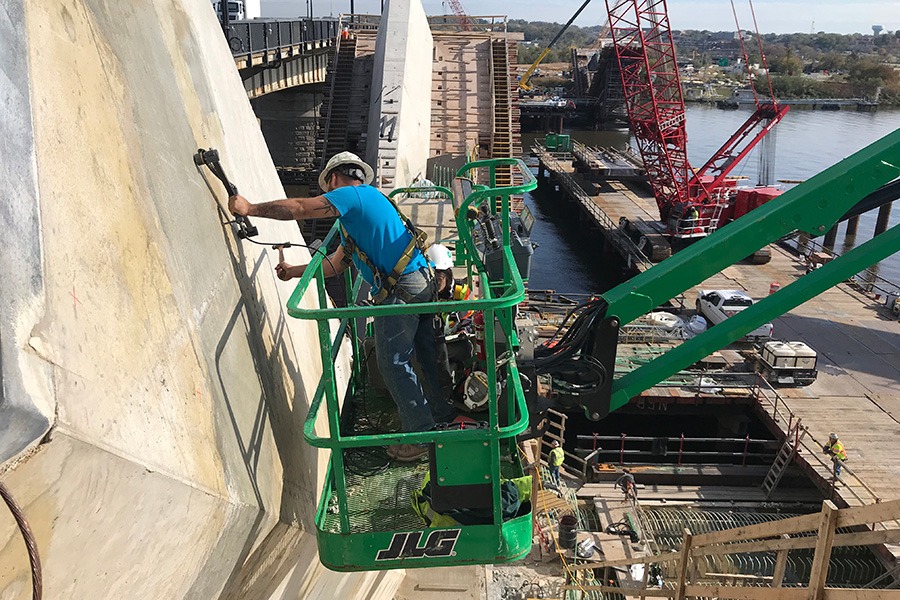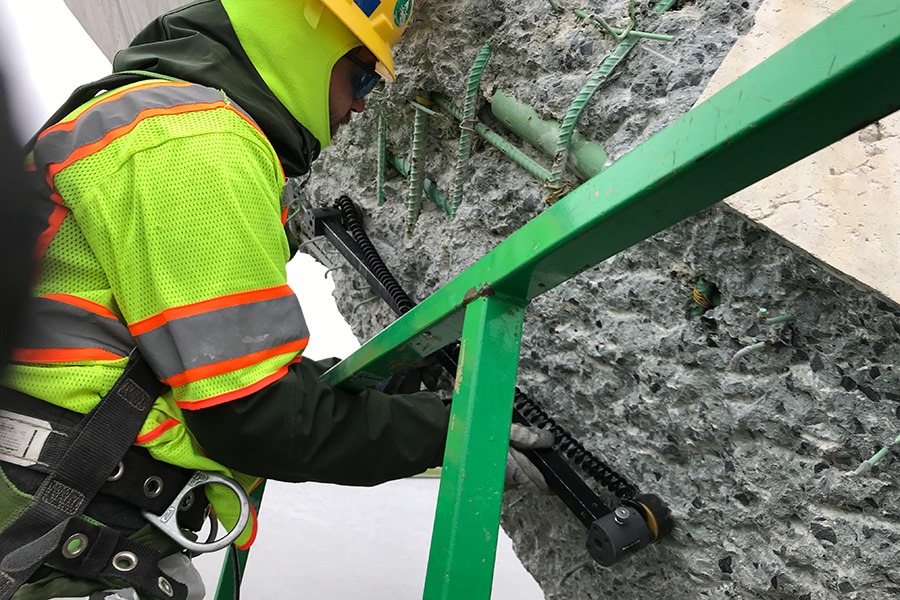Spectral Analysis of Surface Waves
Spectral Analysis of Surface Waves (SASW) investigations are typically applied to assess material stiffness and condition, and layer thickness. This test method can also be used to determine depth of surface cracks.
The Spectral Analysis of Surface Waves (SASW-S) system is designed for the following applications:
- Determination of pavement system profiles including the surface layer, base and subgrade materials
- Surface-opening crack depth measurement
- Determination of abutment depths of bridges
- Condition assessment of concrete liners in tunnels, slabs, and other structural concrete members
- Evaluation of alkali-silica, fire, fire, freeze-thaw and other cracking damage
- Velocity vs. strength correlation with cores
Data Platform Required, Sold Separately
 |
Freedom Data PC |
 |
NDE 360 |
The SASW method uses the dispersive characteristics of surface (Rayleigh) waves to determine the variation of the shear wave velocity (stiffness) of layered systems with depth. The SASW testing is applied from the surface making it both nondestructive and non-intrusive. Once the dispersion curves are determined, Young’s moduli of the materials can be calculated through the use of elastic wave theory equations.
If optional WinSASW software is purchased, shear wave velocity profiles can be determined from experimental dispersion curves (surface wave velocity versus wavelength) and compared to actual SASW measurements through a process called forward modeling or through an inversion process. This allows the user to find the best thickness and stiffness model for the layered system of interest.
The SASW method can be performed on any material provided there is an accessible surface for receiver attachments.
SASW Case Study
Applicable On:
- Asphalt
- Concrete
- Masonry
- Stone
- Wood
Test For:
- Surface Crack Depth
- Layer Thickness
- Material Moduli
- Shear Wave Velocity Profiles
Meets ASTM:
- N/A
Meets ACI:
- ACI 228.2R
Key Features
| Receivers mounted on the SASW bar allow for fast and accurate field measurements | Real-time waveform display while testing |
| System is compact, durable, and easily transported allowing for multiple tests per day | Olson's WinSW acquisition software and optional WinSASW modeling software are compatible and easy to use, yielding fast and accurate results |
| Measurements accurate to within 5% for the determination of the thickness and stiffness of the top layer in a pavement system or of the concrete liner of a tunnel |
SASW-S Model [Base Model]
| Description: | Test For: | Applicable On: |
| The SASW-S Model is the base model and includes the SASW receivers mounted to the SASW bar, the SASW cable, and ball-peen hammers for impacting the surface. This system is used for testing with receiver spacings between 2.4 inches and 31.5 inches (6 and 80 cm). These spacings are appropriate for depth investigations down to approximately 5.1 ft (1.5 m) and multi-layered analysis to 2.6 ft (0.8 m). Download System Overview PDF |
|
|
SASW-A Model
| Description: | Test For: | Applicable On: |
| The SASW-A Model is comprised of two accelerometers. Performs testing with accelerometer receiver spacings up to approximately 12 ft (3.6 m). Download System Overview PDF |
|
|
SASW-SA Model
| Description: | Test For: | Applicable On: |
| The SASW-SA Model is the most complete SASW system as it includes both the SASW bar and two accelerometers. Allows for investigations with receiver spacings up to approximately 12 ft (3.6 m). Download System Overview PDF |
|
|
WINSASW Software [Optional]
| Description: | Test For: | Applicable On: |
| With the addition of optional WinSASW software, shear wave velocity profiles can be determined from experimental dispersion curves (surface wave velocity versus wavelength) and compared to actual SASW measurements through a process called forward modeling or through an inversion process. This allows the user to find the best thickness and stiffness model for the layered system of interest. |
|
|
Hands-on training is available for all of our NDE test methods at our Wheat Ridge, Colorado (USA) location, which is a suburb located approximately 15 minutes northwest of downtown Denver. Training may be available at your location by one of our agents/engineers upon special arrangement.


